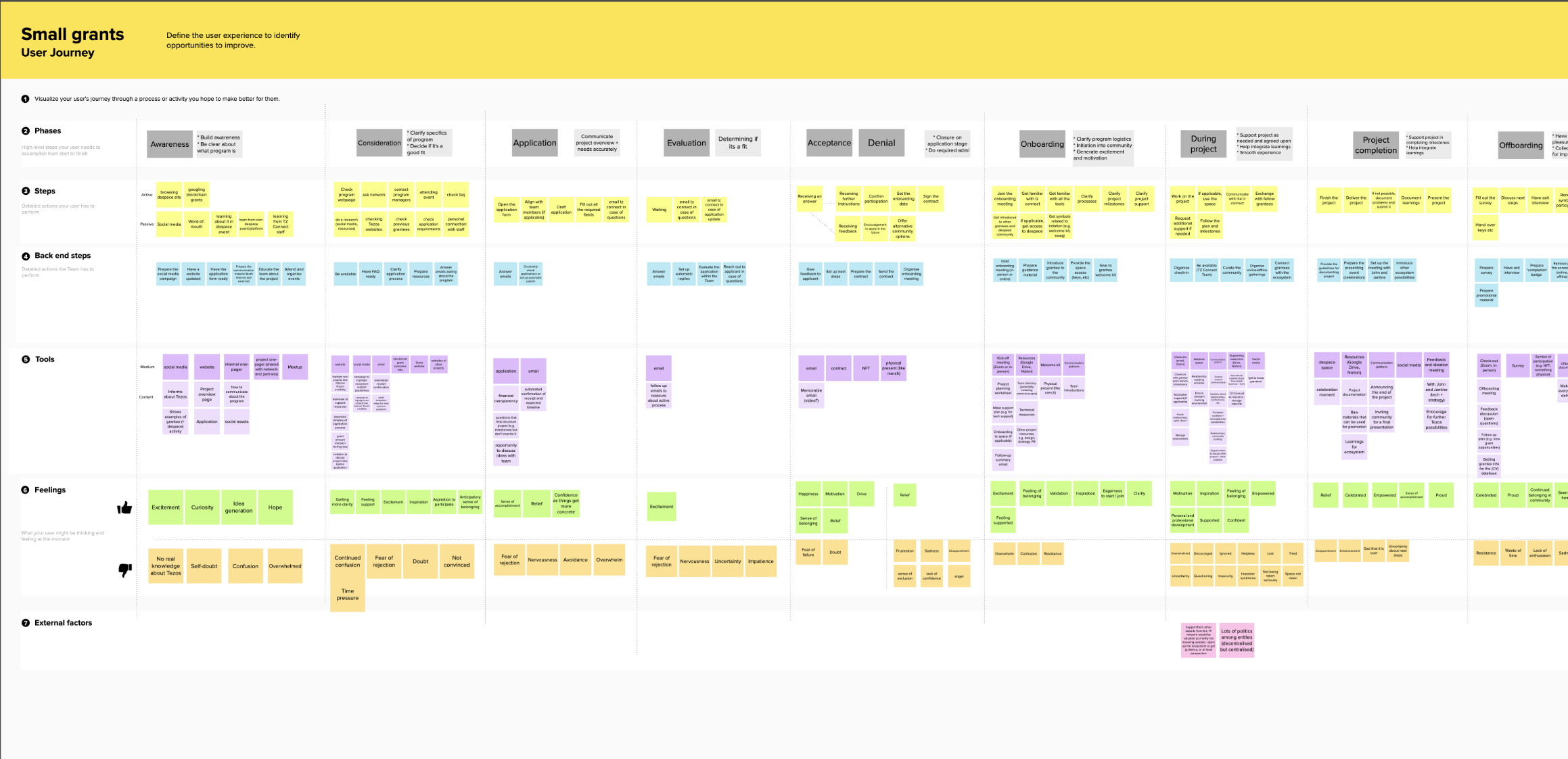Nurturing Innovation: A Blueprint for Launching a Small Grants Program
During my time at TZ Connect, I led the development of the "Down The Rabbit Hole" small grants program, funded with 100,000 EUR from the Tezos Foundation. Inspired by the curiosity of Alice in Wonderland, our program embraced the ethos of exploration and learning.
Down The Rabbit Hole supported initiatives and projects leveraging Tezos technology to innovate new products, applications, and blockchain tools. Simultaneously, it aimed to raise awareness of web3 utility functions through educational and informational activities.
The program covered diverse categories, including industry exploration, proof of concepts, open-source ecosystem development, community building and engagement, and research. Over a year, we supported 13 grantees, providing financial assistance, access to community workspaces, and guidance from our team and network experts.
Building the Program from Scratch
Secure Grant Financials:
For our program, funding was secured from the Tezos Foundation. While the Foundation had its grant program for larger projects, our collaboration allowed for the distribution of smaller funds to local projects.
Conduct Secondary Research:
To initiate a community program, comprehensive research is key. Begin by exploring existing grant programs within and beyond the web3 and blockchain industry, noting best practices. The abundance of grant programs in the web3 space made this process relatively simple, providing insights into their setups and essential components. Make sure to track your insights and sources.
Conduct Independent Research:
In our Berlin network, we were fortunate to have projects affiliated with the Tezos Foundation's larger grant program. My colleague Anita Sengupta (Design Lead) joined me, so we interviewed grantees and gathered insights into their experiences, pain points, and suggestions for improvement.
Tip: Combine both types of research. Anita and I mapped out the grantee journey, identifying pain points and generating improvement ideas.
Create a User Journey Overview:
I believe in visual representations for clarity. Using tools like Mural, we created an overview of the grantee journey, spanning awareness to post-project phases. This visual document served as a constant reference point throughout the program, allowing for the addition of new insights.
Define Program Criteria and Guidelines:
With a high-level understanding of the program, it is important to define detailed criteria for grant reception, along with requirements and categories.
Brand the Program:
Depending on available resources, develop program branding, including the name, logo, colors, and tone of voice. Our initial branding was kept simple, with the name chosen after a brief brainstorming session and a basic design prepared by our Lead Designer. We recognized the importance of creating a simple yet inviting brand that resonates with individuals, encouraging them to freely explore and express their ideas—particularly those new to the web3 space.
Tip: Don’t spend too much time on this if the priority is to get the grant running, as you can always go back to branding to give it a better look and feel.
Contracts and Legal Considerations:
Establish clear and comprehensive contracts and legal frameworks to govern the grant program effectively. Many drafts can be found online, but collaborate with the legal team to prepare a contract aligned with the company policies. In the contract, have clarity on the payment installments and requirements that have to be met to have the rest of the installments paid.
Publish Information Online:
Ensure all relevant information, including the explanation of the application process, is published on the internet via a dedicated website. Don’t forget to have a FAQ section that you update regularly.
Establish a Clear Application Processing Process:
Define team roles and responsibilities with a RACI (Responsible, Accountable, Consulted, Informed) matrix, streamline back-end processes, get back to applicants in promised response times, and ensure a smooth financial processing system. If an application is declined, provide feedback on the reasoning, and if accepted, start with the onboarding and take the grantee through the next journey phases.
Share, Promote, and Market:
Actively promote the program through various channels to maximize reach and impact. In our case, we used our social media, community events, and other web3 platforms that are sources of information for grant programs.
While this blueprint gives you a starting point for launching a grant program, the real deal begins when you bring grantees on board. Each project is unique, so you'll need to approach them individually. Be clear about what you expect, the timeline to follow, and how you'll stay in touch. If you have team members or mentors involved, make sure they're on board and address any concerns they might have.
The first few months of the grant program will have surprises and challenges. Not everything will go as planned, and that's normal. Be honest with your grantees, support them, learn from the experience, and keep looking for ways to make things better.
More for Curiouser and Curiouser…
Extract of the User Journey Map
First iteration of the program branding
Promotional video for the launch of grantee’s project


